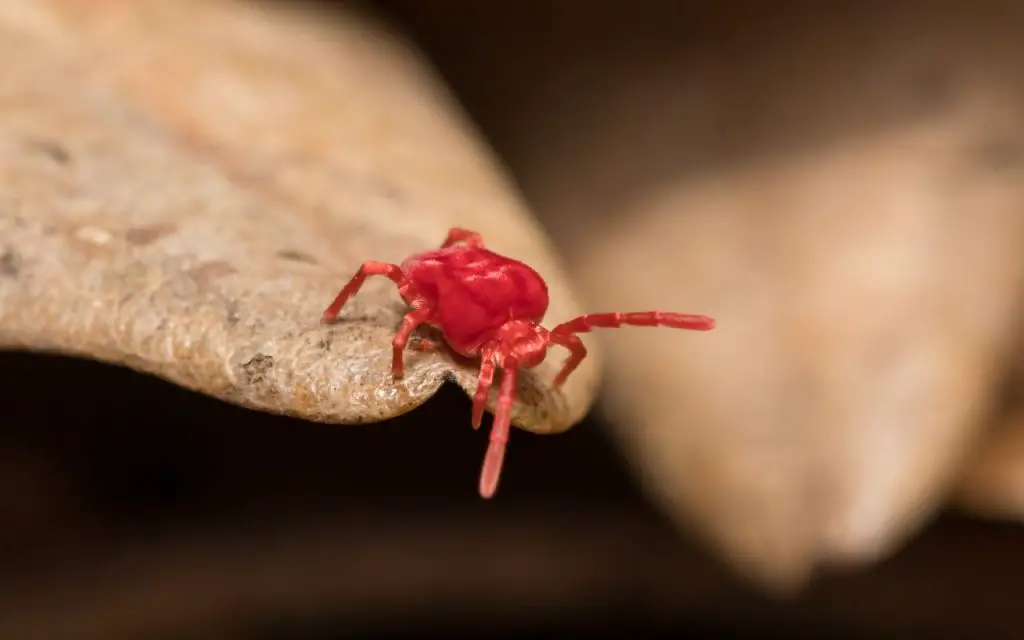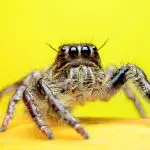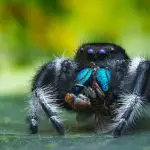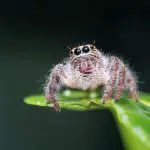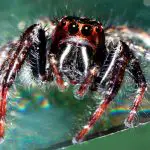Last updated on January 25th, 2023 at 09:54 am
What are the little red spiders? They aren’t spiders at all, they’re mites. Unlike the parasitic mites such as chiggers, these are completely harmless…
The tiny red bugs you are noticing in your home can be either spider mites, clover mites, or red velvet mites. All look similar to the naked eye and are distant relatives.
It might surprise you but the tiny red spiders in your home are not spiders after all but are related to spiders. Both are arachnids but belong to a different subclass: the Acari, more commonly referred to as mites.
The red mites are often mistaken for small spiders due to their appearance, and the habit of spinning a silky web on plants.
How different are spider mites, velvet mites and clover mites (Bryobia praetiosa)? They’re all are quite similar with very little difference.
Clover mites and spider mites both have eight legs, no wings, or compound eyes. The two legs at the head are often mistaken to be antennae.
Their tiny size makes it impossible to distinguish them well. Clover mites prefer milder weather compared to spider mites. Spider mites seem to be more active in warmer as well as cooler weather.
Small, harmless mites
The fun part is, clover mites are parthenogenetic. That means, clover mite eggs do not have to be fertilized by the males. These mites are closely related to ticks and not insects. However, they are not as dangerous to health as ticks.
The one-month life cycle of a clover mite is enough for a female to lay about seventy eggs. After hatching, a clover mite takes about a couple of weeks to mature and reproduce.
When the population explodes, these tiny red bugs may migrate indoors from the grass. Usually, they are noticed on the sides and windows of houses.
Unlike most garden pests, clover mites prefer cooler weather. Their activity increases with a drop in the temperatures in early fall. That gives them a chance to feast on clover along with other plants and hence they stay true to their name ‘Clover mite’.
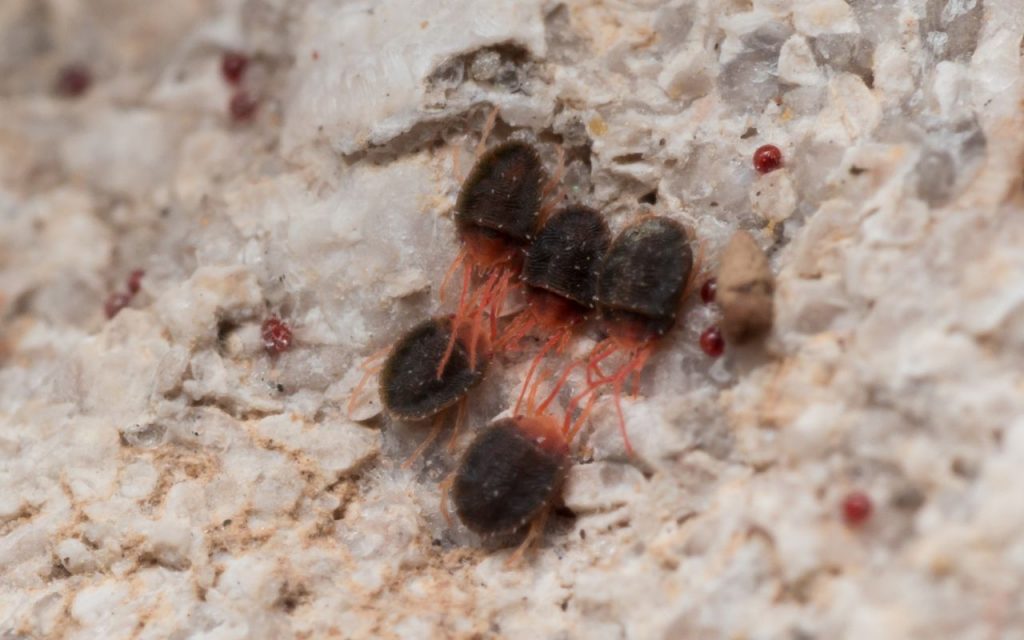
Tiny red spider mites
Spider mites are not spiders but are related to them. Being arachnids, just like spiders, mites, and scorpions, spider mites and not related to most other insects. Like spiders, these tiny red mites spin silk, and make webs, mostly to protect their eggs and the young ones.
Spider mites aren’t always red! Some species are yellow, orange, and even green. Spider mites may be difficult to recognize due to their microscopic size.
These small mites have only one body section, unlike spiders that have two.
Some striking characteristics of spider mites are –
- Spider mites have only one section of oval body
- These arachnids have four pairs of legs
- They do not have antennae
- An average adult is about 1/50 of an inch in length
- Most spider mites produce fine silk webbing
Tiny red spider mites are considered garden pests. They thrive on plant sap and prove to be harmful to many plants including azaleas, camellias, roses, fruit plants, and several crops.
The two most common types of red spider mites are:
- The European red spider mite (Panonychus ulmi)
- The Southern red spider mite (Oligonychus ilicis)
The Southern variety is the most common one found in gardens. The European spider mite can usually be seen on apple trees and fruit orchards. This variety of spider mites affects a wide variety of plants.
In case of an infestation, spider mites can cause a lot of harm to plants.
The tiny red spider mites eat as many as two hundred different plant species. That includes grass, flowers, vegetables, ornamental plants, and also fruit plants.
How long do red mites live?
Although most spider mites do not live for more than about a month, an adult female can produce about a hundred eggs in her lifetime. To grow from an egg to an adult, a spider mite goes through five stages of life.
- Egg
- Larva
- Protonymph
- Deutonymph
- Adult
A variety called the two spotted spider mites grows extremely fast. Their young ones have rapid development and are ready to reproduce as soon as five days of their life.
That is one reason for an explosive population of two-spotted spider mites. These mites thrive well in hot and dry climates and make webs on leaves and stems rapidly.
Tiny red bugs in house
Tiny red bugs inside the house may not be a pleasant experience. If you spot these small spot-like bugs they are most probably clover mites.
The urge to crush these red bugs may be too tempting to resist. But, hold it right there!
Squashing them may leave ugly red stains on your bed, walls, or wherever you swat them. There are other ways to prevent them from coming inside or to terminate them.
Seeing thousands of tiny red bugs inside the house may be worrisome just like spotting ticks on your dogs. They can multiply quickly and rapidly.
Clover mites mostly move indoors through openings in the walls, foundation, doors, or windows. Identify the entry points and seal them as soon as possible to stop further migration.
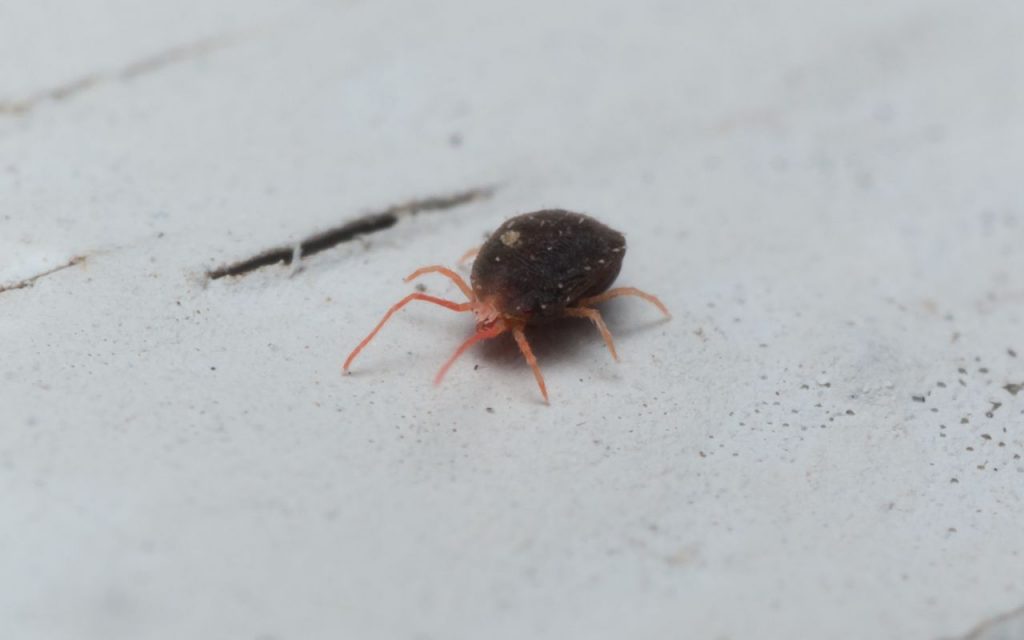
Do clover mites get on clothes?
Clover mites feed on plant sap and are most common in gardens and heavily vegetated areas. They are quite harmless to property and clothing.
They are not particularly attracted to clothes of any kind like carpet beetles, silverfish, and clothes moths.
However, when inside the house, these tiny red mites may get on clothes. It is best not to crush them but to blow them away.
Crushing them would mean leaving ugly stains and damaging your clothes.
What attracts red spider mites?
Spider mites feed on plant fluids or sap. These red mites puncture plant cells with their piercing mouthparts and suck out plant fluid.
They are attracted to over-fertilized grass, or plants as they contain an additional dose of proteins and amino acids. Over-applying nutrients or nitrogen can make your plants more susceptible to red spider mite attacks.
These pets essentially prefer living outdoors due to their food habits. Most spider mite species thrive in hot and dry conditions. That makes them unwelcome guests at almost any time of the year.
A spider mite infestation may be noticed during a drought, hot summer, or even early fall and spring. When spotted indoors, the main reason for their presence can be indoor plants. These pests are more attracted to under-watered plants.
Spider mites also like dusty conditions. They are often spotted on trees near dusty roads, or at the edges of gardens.
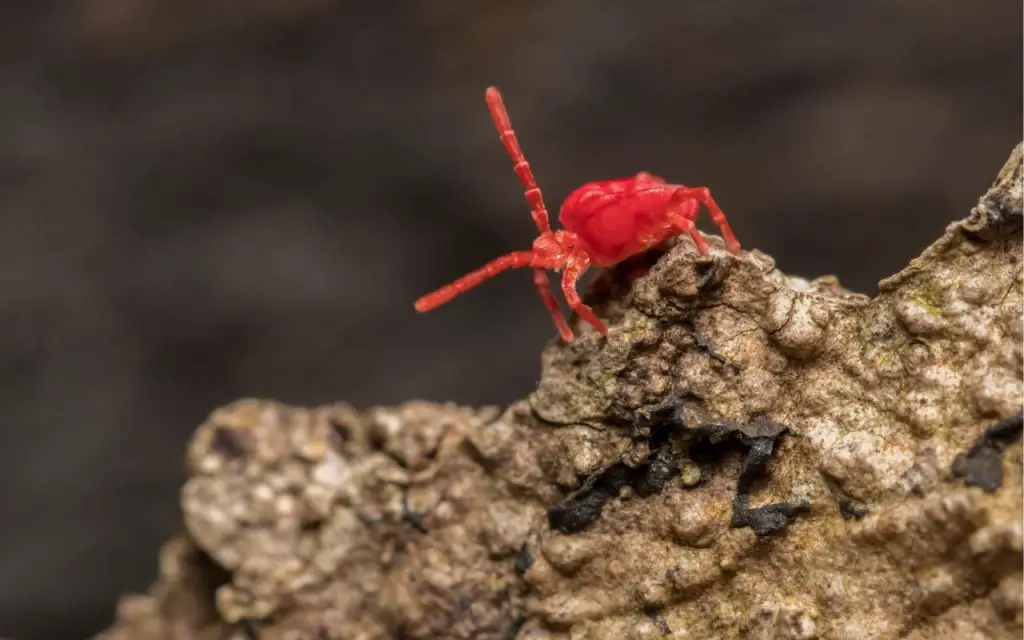
Tiny red bugs in bed
Bugs making it to your bed is nothing uncommon. However, knowing about the common red bugs helps you understand how harmful they are and what you should do to get rid of them.
The most common bugs spotted on the bed are bed bugs. These little creatures can be quite a menace as they feed on blood.
However, in some cases, those tiny bugs may be clover mites. The usual time for these tiny mites to show up varies from late spring to early summer.
Mostly, these red bugs are spotted in gardens as they feed on plants. However, excessive heat, rain, unpleasant weather conditions, and excessive infestation, may cause these bugs to move inside the house.
When they enter the house, they may be all over the place, even on your bed. Relax, they are not dangerous and don’t bite.
But they must be removed at the earliest as they breed fast.
Tiny red bugs Minnesota
The tiny red clover mites are common in Minnesota. They mostly live outdoors and feed on plant saps but may also infest homes.
These small creatures mostly appear in spring, fall, and also sunny winter days. As they prefer colder weather, clover mites are usually inactive during hot summers.
They may disappear when the weather gets too cold and reappear in early spring.
Tiny red bugs in Minnesota can be noticed on walls, window sills, tree trunks, and other surfaces outdoors where they can find convenient spots to hide.
They crawl into cracks and crevices to stay protected. Places under sidings, shingles, or shakes are some of their favorite hiding spots.
The red mites become inactive in cold weather and are seen feeding on the lawns again in spring.
Professional pest control is the ideal way to handle Minnesota clover mite infestation.
What do clover mites do to humans?
Clover mites may look like tiny blood spots but they are not blood-sucking creatures. The reddish color comes from their body pigment.
These mites are not dangerous and do not bite or sting. They also do not transmit any diseases like other household pests like cockroaches, house flies, and rodents.
The presence of clover mites inside the house may indicate some other issues like excess moisture indoors. Most pests are drawn to moisture. Indoor moisture may be from rotting wood or wet walls that might need attention.
Additionally, there may be cracks, holes, or openings through which the clover mites enter the house. These openings may also allow larger pests to make their way indoors.
Can clover mites get on dogs?
Clover mites are mostly garden pests. They do not pose any threat to dogs. They don’t bite or spread diseases among canines.
They are not like blood-sucking ticks that hook on to dogs to feed on their blood.
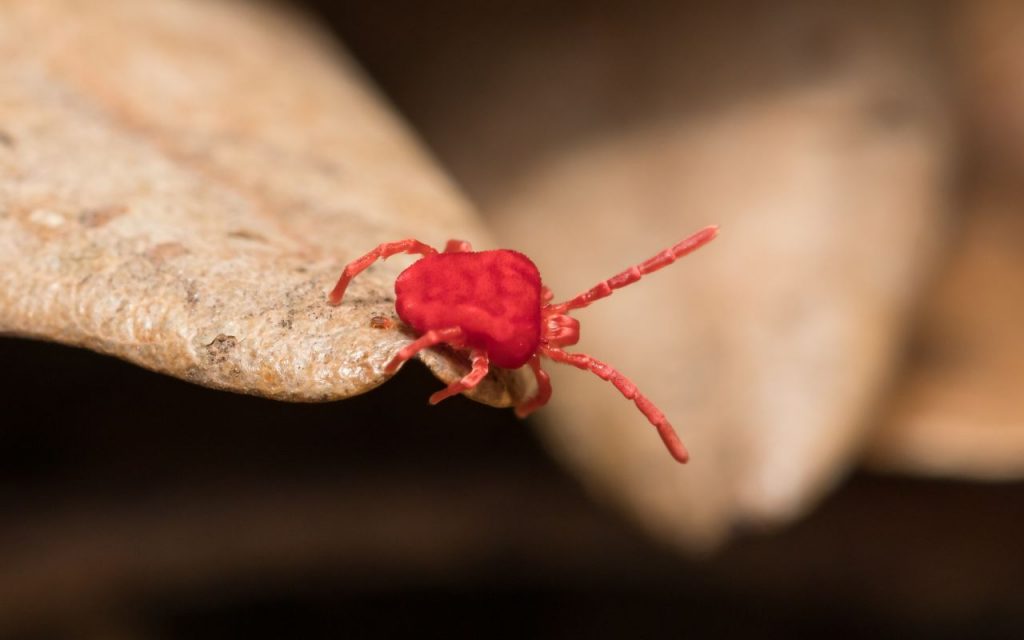
FAQ relating to the little red spiders
Can clover mites bite humans?
The plant-feeding clover mites do not bite humans. They do not cause any harm to humans. In fact, they only annoying thing they can do is leave a stain if you accidentally squash them.
They may get inside homes sometimes due to some reasons like unfavorable weather outdoors but that’s about all.
What are those tiny little red spiders?
Those tiny red spiders may be spider mites or clover mites.
Clover mites are reddish, about the size of a pin-head, and move around very quickly. The egg and immature mites are bright red. The red mites usually occur in plenty during spring, fall, and early winter depending on the temperature of the region.
Clover mites live and feed on turfgrass, especially on fertilized lawns. They may go unnoticed initially due to their minuscule size.
How do you get rid of little red spiders?
The little red spiders can be a reason for annoyance in the garden as well as indoors. Sometimes they may also enter houses through cracks and crevices, or open doors and windows.
There are different alternatives available for getting rid of little red spiders indoors and outdoors. Pest control is the best method as professionals can identify sources, and hiding spots and apply an appropriate treatment.
- Water dry areas of the garden to discourage the mites to lay eggs
- Rake the lawn to allow aeration
- Use an insecticide for clover mite control
- Use a vacuum cleaner to remove them from indoors
- Use preventive methods like not over-fertilizing the garden
- Close unnecessary openings like cracks that allow pest access inside the home
- Discouraged mites with organic neem oil, eucalyptus oil, peppermint oil, thyme oil spray
Are red mites harmful to humans?
Red mites are not harmful to humans as they don’t bite, sting, or spread diseases.
However, people with sensitive skin may get mild irritation from these creatures. The droppings of clover mites may trigger respiratory ailments and allergies.

